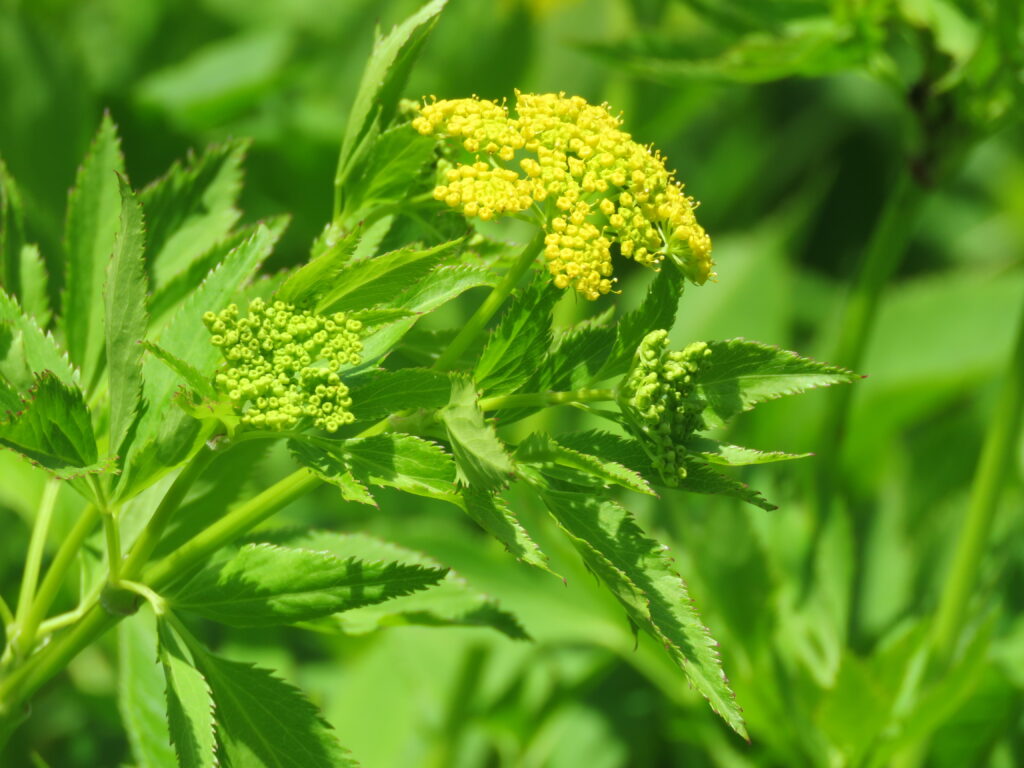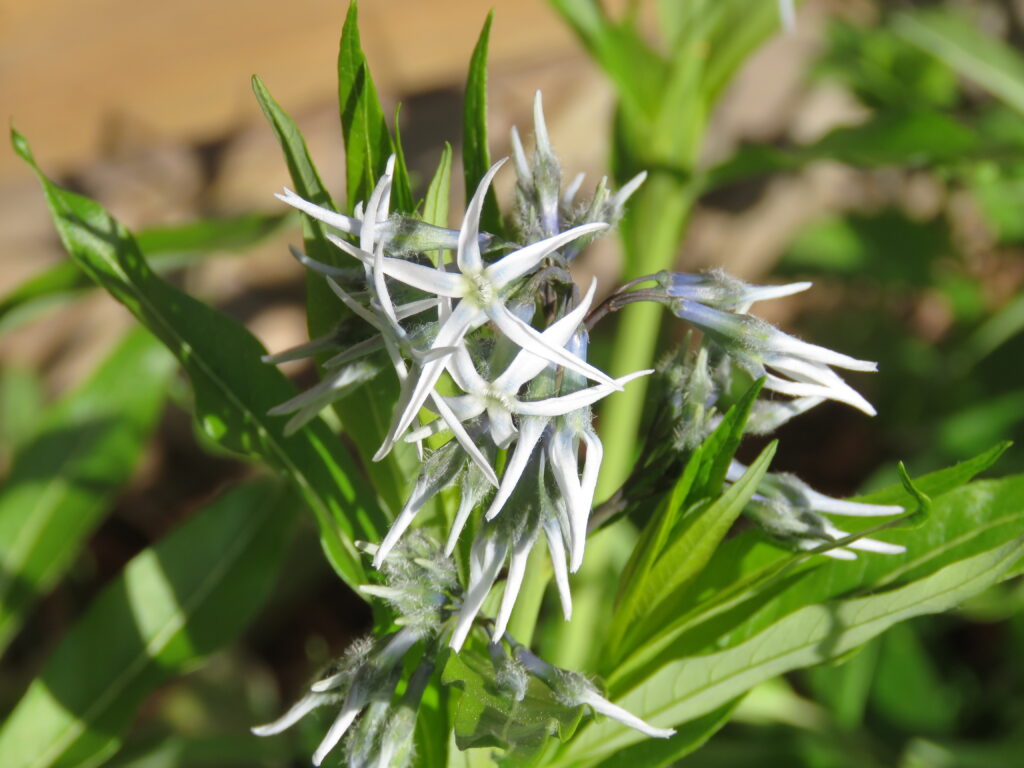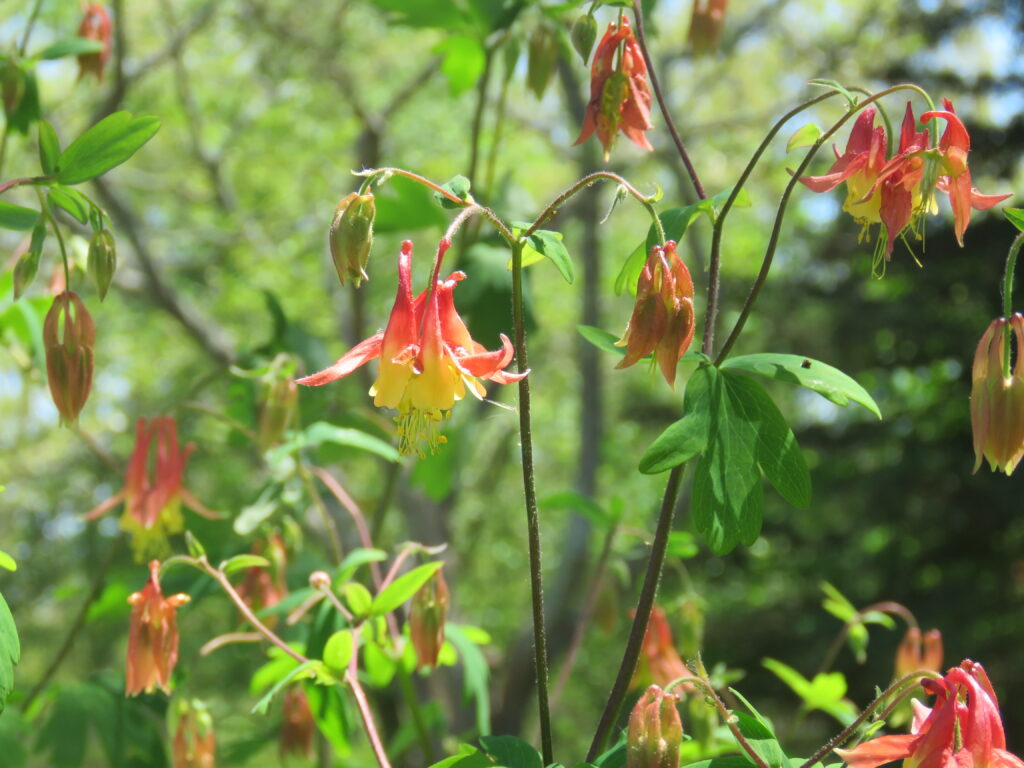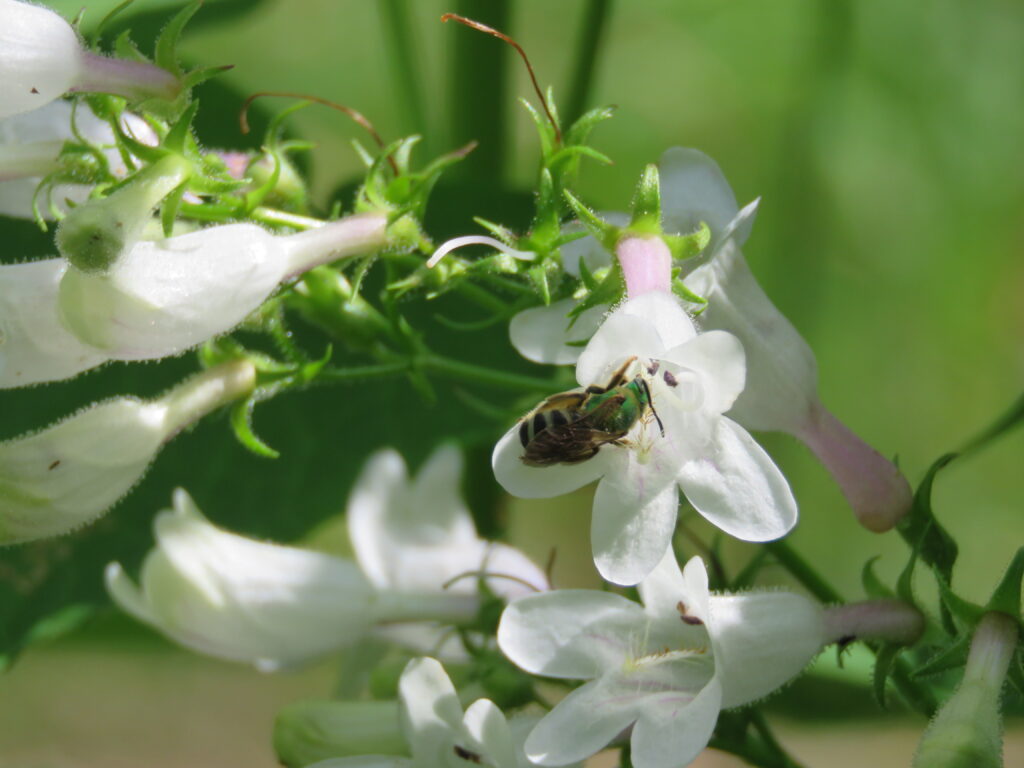Support pollinators, birds and wildlife by adding a few spring blooming native plants to your yard. Native plants are perfectly adapted to our sandy south Jersey native soils and local climate. There is a wide variety of beautiful natives to choose from that thrive in our well-draining, nutrient poor, slightly acidic soil conditions. Learn more about soil, water and plants on OCSCD’s Educational Resources webpages. Head over to the Jersey-Friendly Yards Plant Database and select just the right plant for your yard. Find plant nurseries in your county, and visit the Jersey-Friendly Yards Facebook page to learn about native plant sales in your area. Get inspired by watching educational videos and webinars on OCSCD’s YouTube Channel and the Jersey-Friendly Yards YouTube Channel.

Golden Alexanders (Zizia aurea) will brighten your garden from mid-spring to early summer, providing swaths of joyful yellow, as well as nectar and pollen source for pollinators. As the flowers go to seed in June, the lush foliage continues throughout the growing season. A member of the carrot family, Golden Alexanders is a host plant for Black Swallowtail butterfly larva. Dill, parsley, celery, sweet fennel and caraway are other garden herbs that will support this caterpillar species. Plant enough for you and the bounty of butterflies you’ll attract.
This easy-to-grow native is not picky about where it anchors its roots – sand, clay and loam will all suffice. It tolerates dry, moist and wet soils and has a high drought tolerance. Golden Alexanders is also deer resistant – a welcome attribute in areas with large deer populations. Full sun will beget more blooms, but part sun and shade will not deter Golden Alexander from making an appearance.
The bloom time for Eastern Bluestar (Amsonia tabernaemontana) overlaps Golden Alexanders, starting about 2 weeks later. The delicate, star-shaped flowers are huddled together atop the stems. Blue – a rare color in the flower world – dazzles the eye as the flowers unfurl and shine in the spring garden setting. Beyond the blooms, Eastern Bluestar provides lush green foliage in the garden and makes a lovely backdrop for your summer blooming sensations. Pair with Cardinal Flower (Lobelia cardinalis) or Great Blue Lobelia (Lobelia siphilitica).
Eastern Bluestar prefers sandy, loam or organic dry-to-moist soils. Once established, they exhibit medium drought-tolerance. Pamper them with slightly moist soil for exceptional plant health. Patience is required from initial planting to the year it first blooms, as they may take a season or two to mature and overcome transplant shock.


Eastern Columbine (Aquilegia canadensis) is another spring blooming beauty. It’s bell-shaped bi-colored flowers dangle on the tips of tall stems that grow well above the foliage. The red and yellow colors attract Ruby-throated Hummingbirds, arriving to breed in our south Jersey backyards. The low-growing vegetation grow in clumps and masses, carpeting the soil in green. The leaves are delicate, lobed and remain attractive throughout the summer.
A partly sunny location is preferred, although Eastern Columbine will perform in full sun and full shade. Moist sand, loam or organic soil will provide healthy plants that maintain their lush green leaves throughout the growing season. Plant in masses for a glorious array of blooms and watch as the hummingbirds flit from flower to flower seeking nectar.
Foxglove Beardtongue (Penstemon digitalis) begins to bloom in late May to early June, as the Golden Alexanders, Eastern Bluestar and Eastern Columbine wind-down. Each plant houses several slender stalks, each holding masses of delicate trumpet-shaped white flowers. This wildlife-friendly native offers nectar to hummingbirds, butterflies and bees. It’s eye-candy for humans.
One of the only species of Foxglove that can tolerate clay soil, as well as sand and loam, this plant is a winner for gardens everywhere in Ocean County. Tenacious and versatile, Foxglove Beardtongue tolerates from dry to moist soil conditions, and from full-sun to partial shade light conditions. It can reach heights from 3-5 feet and spreads 1-2 feet wide. This deer-resistant plant self-seeds and individual plants are not long-lived, so it may not come up in the same place in your garden each year.

